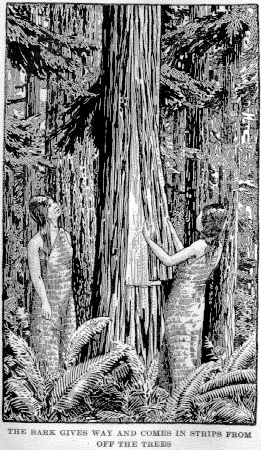Cedar bark textile facts for kids
Imagine clothes made from tree bark! For hundreds of years, indigenous people in the Pacific Northwest used special tree bark to make almost all their clothing. This region includes parts of what we now call Canada and the United States. They created 'cedar bark textile' by shredding and weaving bark from cedar trees.
Contents
What Trees Provide Cedar Bark?
The main trees used for this amazing textile are the Western redcedar (known scientifically as Thuja plicata) and the yellow cypress (Callitropsis nootkatensis). People often call the yellow cypress "yellow cedar." These trees grow tall and strong in the Pacific Northwest forests.
How Was Bark Collected and Prepared?
Collecting the bark was a careful process. People would peel long strips of bark directly from the trees. They made sure not to harm the tree so it could keep growing. Once collected, the bark had two layers. The rough outer layer was removed. The soft, flexible inner layer was kept.
This inner bark was then shredded into thin, ribbon-like pieces. These pieces were processed further, often by soaking and pounding them. This made the bark even softer and more flexible. The prepared bark felt almost like felt, ready for crafting.
What Was Made from Cedar Bark?
The soft, prepared bark could be used in many ways. It was often braided, sewn, or woven into different types of fabric. Some fabrics were made very dense and tight, which meant they could hold water. These were perfect for things like baskets or waterproof capes. Other fabrics were made soft and comfortable, ideal for everyday clothing.
Clothing from Cedar Bark
Cedar bark was a primary material for clothing. Women often wore skirts and capes made entirely from red cedar bark. These clothes were practical and comfortable for daily life. Men also wore long capes made from cedar bark. Sometimes, they would weave in some mountain goat wool. This wool added decorative patterns and extra warmth to their capes.
See also
- Barkcloth
- Northwest Coast art
- Textile arts of indigenous peoples of the Americas


